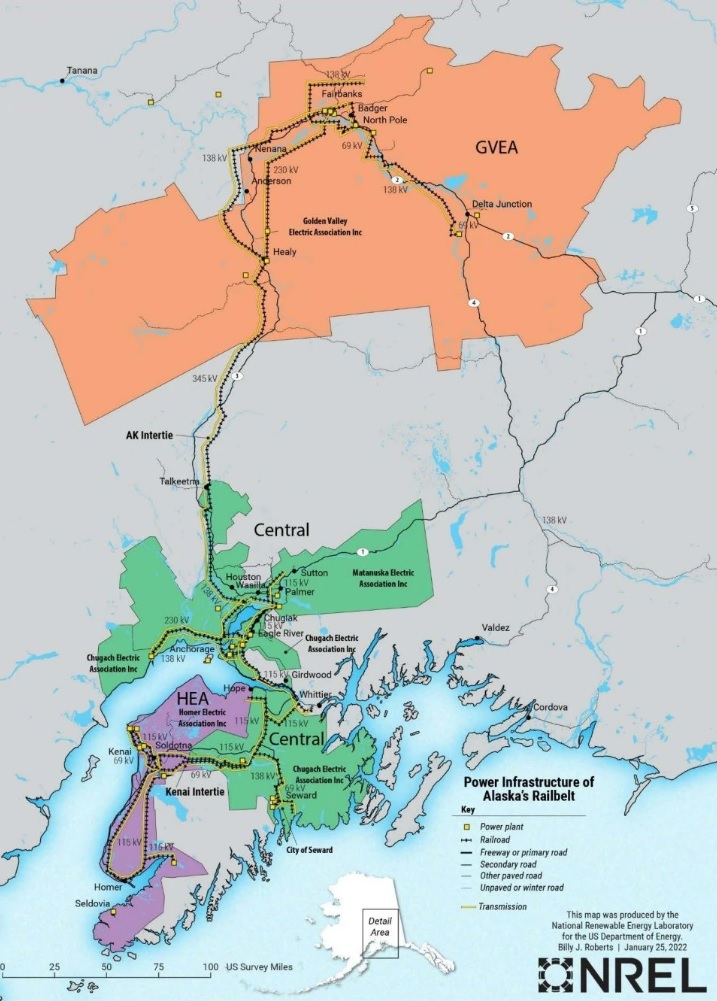Debriefing Decarbonization

By Sarah Burch
This is an excerpt of a story from Alaska Microgrid Group’s blog.
Over the summer, AMG’s executive director Peter Asmus spoke to Steve Colt, a principal investigator on the Railbelt grid decarbonization project, on Asmus’ radio show. Colt is a research professor of energy and economics at the Alaska Center for Energy and Power. AMG is working with ACEP, along with others, on the long-term decarbonization efforts. But, what is Railbelt decarbonization and why is it important?
What is the Railbelt grid?
Alaska’s Railbelt grid is a system that started with the first utility companies in Alaska. Over time, utilities — many of them cooperatives — were started out of pure need for electricity and energy throughout Alaska. As these cooperatives grew, they started to bump into each other, and borders were created to distinguish the area each utility covered. The utilities in Alaska mainly operate in stand-alone grids often called “remote microgrids.” The six electric utilities along the Railbelt grid, however, interconnect with each other while maintaining their independence with their own generation sources.
The grid is called the “Railbelt grid'' because it runs along the general route of the Alaska Railroad, though the grid extends slightly farther, running from Fairbanks to Homer. To learn more about the Railbelt grid, you can read AMG board member Gwen Holdmann’s ACEP blog about electricity in Alaska.
How decarbonization could work.
Why is there an initiative to decarbonize Alaska’s grid in the first place?
A motivating factor for decarbonization efforts in Alaska is that the Railbelt is a large source of carbon dioxide, a main driver of pollution and climate change.
The Railbelt grid operates on 75% natural gas and 10% hydropower, with the remainder powered by coal. From one perspective, Alaska has a relatively clean grid, since natural gas produces less air pollution, especially carbon dioxide, than coal and oil. But natural gas is still not completely a “clean” energy source, and it is not renewable. Because Alaska’s grid has a relatively low percentage of renewables in comparison to its natural gas usage, some argue the grid could be more sustainable than it currently is.
Read the full piece at https://www.alaskamicrogrid.org/post/debriefing-decarbonization.
Map of Alaska’s Railbelt system. Graphic courtesy of NREL.


